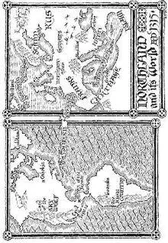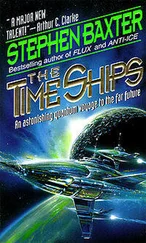And the way RDA achieves the latter is by using a much-advanced version of a novel manufacturing technique called stereolithography, or “3D printing.”
This is a kind of photocopying of solid objects, in which computer-controlled machines build up a component by spraying on layer by layer. Typically, systems working today have used plastics, but there have been experiments using metals and ceramics. Advantages of the technique are its ability to construct more complicated and intricate shapes than any other primary manufacturing technology, and its flexibility—one system can turn out any component you like, whereas otherwise you’d have to bring along specialised plant for each type.
Today, commercial systems are used to manufacture items like jewellery, but they are also being trialled on a larger scale, for example in projects where buildings are constructed layer by layer by robots pouring fast-setting concrete. There are also home-workshop experiments you can download, such as the “Reprap” project, the Replicating Rapid-prototyper, devised by Adrian Bowyer of the Buckinghamshire Chilterns University College in England. As you can imagine, there are fascinating intellectual property rights issues to be resolved around this technology.
Even on Earth, if we could manufacture a lot of what we need at home we might cut transport costs significantly. And stereolithography certainly cuts the cost of transport to Alpha Centauri, where the RDA manufactures its own ground vehicles, mine equipment, weapons, building elements, even clothing. As we’ll see, however, the use of this technology imposes some constraints on the kinds of machinery that can be used on Pandora.
Remarkably, experiments at the Massachusetts Institute of Technology have tried using the 3D-printing technique to make artificial human bones. In the course of Avatar we get a look at a number of other medical advances.
Former Marine Jake Sully is stranded in a wheelchair, the result of a traumatic injury he suffered on active service. He’s aware that a “spinal” can be fixed, but only at a price beyond the means of his veteran’s benefit. In the context of the movie, Jake’s paralysis serves a key narrative function. Like his eco-devastated Earth it provides another extreme starting point for his personal story; it makes Jake vulnerable to manipulation by Quaritch—and it amplifies the joy he feels, and we share, when he first drives his avatar body, and is able simply to run again.
But it is good to know that in the real world some steps are being taken towards alleviating this terrible condition.
A “spinal” is a spinal cord injury. The spinal cord is a long, thin bundle of nervous tissue that extends from the brain. The cord is contained for protection in the bony vertebral column. Together, cord and brain make up the central nervous system. The cord’s main function is to transmit neural signals between the brain and the rest of the body: “motor information,” data about the body’s movements, travels down the cord from brain to body, and “sensory information,” data recorded by the senses, travels back up the cord from body to brain. The cord also has some independent functions; it serves as a centre for coordinating various reflexes.
It’s estimated that in the United States, for example, there are some forty cases of spinal cord injury per million people per year. The spinal cord can be damaged by trauma, as in Jake’s war injury, or through a tumour, or through a developmental disorder like spina bifida, or a neurodegenerative disease. The vertebral bones or the discs between the vertebrae can shatter and puncture the cord itself. In the more severe cases, such as Jake’s, a patient can suffer a significant loss of motor and sensory functions to major areas of the body, all the way to full body paralysis (quadriplegia) below the site of the injury. In addition a patient can suffer bowel and bladder malfunctions, a loss of sexual function, spasticity and neuropathic pain, and in the longer term muscle atrophy and bone degeneration.
Current treatments amount to administering anti-inflammatory agents or cold saline immediately after the injury. These wouldn’t help Jake walk again. It seems that at present, despite the dreadful outcome of a spinal cord injury, there is comparatively little research being done into new treatments, because of the small (in percentage terms) number of sufferers.
But there are some promising developments. Treatment involving neuronal protection, and even the regeneration of damaged neurons, are being investigated to treat conditions like Alzheimer’s Disease and Parkinson’s Disease, conditions of the central nervous system which have some similarities to spinal cord injuries.
Stem cell treatment seems the most promising approach to neurological regeneration, and attracts a lot of publicity. Stem cells are found in most multicellular organisms. They can renew themselves through cell division, but can also differentiate into a range of specialised cell types. They can be found in embryos, where they go on to produce all the specific tissues the embryo requires. There are also adult stem cells which can act as a repair mechanism for the body, replenishing damaged specialised cells.
In their application in medicine, stem cells are introduced into injured tissues. The cells come from the patient’s own body, so there is no risk of rejection. With proper management the stem cells can be trained to differentiate into the kind of cells needed to repair the damage. The first successful stem cell treatment was as far back as 1968, a bone marrow transplant. It is hoped that stem cell treatments will one day transform medicine by treating conditions ranging from cancer to cardiac failure.
For “spinals” like Jake’s these treatments are in their infancy. It has proved difficult to persuade stem cells to differentiate into spinal motor neuron cells, the type of cell that transmits messages from the brain to the spinal cord. But some success was reported in this in 2005 by researchers at the University of Wisconsin-Madison. And in 2010 the first spinal-injury patient was treated with human-embryonic stem cells.
Another bit of evidence we see of advanced biomedical knowledge in Avatar ’s twenty-second century is the creation of the avatars themselves, derived from “human DNA mixed with DNA from the natives”—the Na’vi. This is a topic we will return to in Chapter 31, but for now we can note that this is a remarkable achievement of genetic engineering.
Here at the beginning of the twenty-first century, genetics is another area of rapid advance and great promise for medicine. A gene is a unit of inherited material encoded by strands of the double-helix molecule DNA (that’s how it works in creatures from Earth, at least). The idea of gene therapy in medicine is to insert genes into an individual’s cells to treat conditions such as hereditary diseases, where harmful mutant versions of a gene can be replaced with functional ones. The idea was raised in the 1970s, and the first attempts focused on diseases caused by single-gene defects, such as cystic fibrosis. The first successful treatment in the U.S. took place in 1990, when a four-year-old girl was treated for a genetic defect that left her with an immune system deficiency. In a trial in London in 2007 a patient was treated for an inherited eye disease, and in 2009 researchers in America gave enhanced colour vision to a squirrel monkey, in experiments hopefully leading to a cure for colour blindness.
An interesting review in the April 2010 issue of the journal Nature summed up the decade since the first full decoding of the human genome, all one hundred thousand genes, the “blueprint of life.” Progress in using genetic data in medicine has actually been slower than expected, because of the complex genetics behind many diseases, apparently exaggerated claims after a few early successes in the 1990s—and the death of a patient in 1999, after a severe reaction to attempts to give him repaired genes. At the time of writing, no patients have actually been cured of common genetic diseases by gene therapy.
Читать дальше










